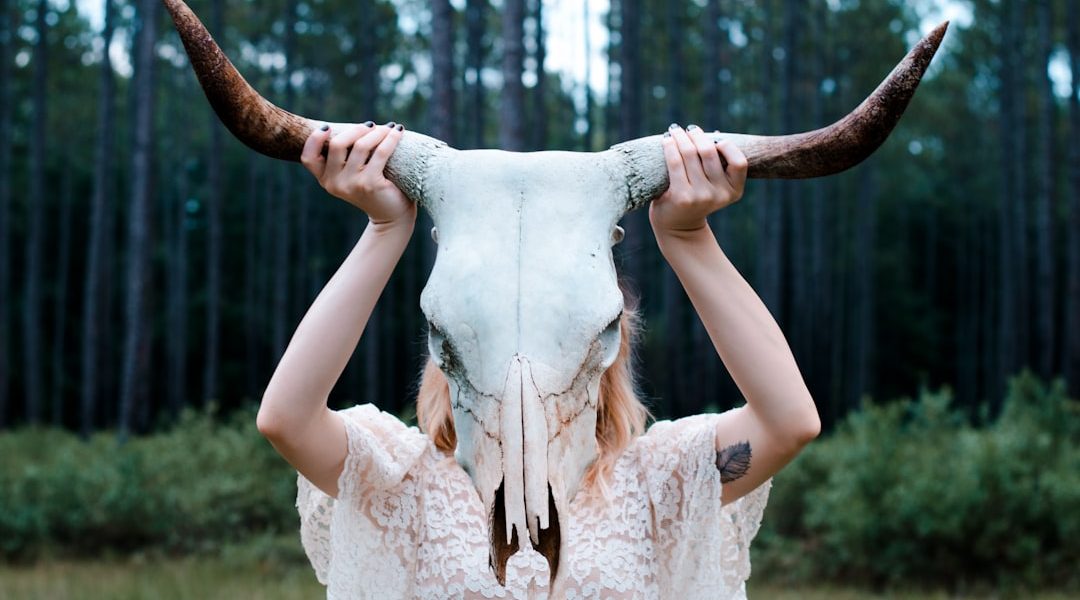The death moth tattoo is a powerful symbol that holds deep meaning for those who choose to adorn their bodies with it. The death moth, also known as the death’s-head hawkmoth, is a striking and ominous creature that has long been associated with death and the afterlife. The tattoo of this moth is often depicted in a realistic and detailed manner, with its distinctive skull-like marking on its thorax. This tattoo is often chosen by individuals who are drawn to the darker aspects of life and who find beauty in the macabre.
The death moth tattoo is a symbol of mortality and the fleeting nature of life. It serves as a reminder that death is an inevitable part of the human experience and that we should live each day to the fullest. The moth’s association with death is further emphasized by its appearance in various forms of art and literature, where it is often used to represent the fragility of life and the inevitability of death. For those who choose to get this tattoo, it serves as a constant reminder of their own mortality and a way to embrace the darker aspects of life.
Key Takeaways
- The death moth tattoo symbolizes transformation and rebirth, as well as the fleeting nature of life.
- The death moth symbol has a rich history, with origins in ancient cultures and various mythologies.
- In different cultures, the death moth holds different meanings, from representing the soul to being a symbol of death and darkness.
- There are various artistic interpretations of the death moth tattoo, with different styles and colors used to convey different meanings.
- The personal meaning of the death moth tattoo can vary greatly, from representing overcoming struggles to embracing change and growth.
The History of the Death Moth Symbol
The death moth has a long and storied history, with its symbolism dating back centuries. The moth has been depicted in various forms of art and literature, often as a foreboding omen of death. In many cultures, the appearance of a death moth was believed to be a sign that someone close to the observer would soon pass away. This association with death has led to the moth being used as a symbol in various forms of art and literature, where it is often depicted as a harbinger of doom.
The death moth’s most famous appearance in popular culture is in Thomas Harris’ novel “The Silence of the Lambs,” where it is used as a symbol by the serial killer, Buffalo Bill. In the novel, Buffalo Bill places a death moth pupa in the throats of his victims, further emphasizing the moth’s association with death and mortality. This use of the death moth as a symbol of death has only served to further cement its place in popular culture and has made it a popular choice for those seeking a tattoo with deep and meaningful symbolism.
The Cultural Significance of the Death Moth
The death moth holds significant cultural significance in various parts of the world. In some cultures, the appearance of a death moth is believed to be a sign that someone close to the observer will soon pass away. This belief has led to the moth being associated with death and the afterlife, making it a powerful symbol in many cultures. In some cultures, the death moth is also seen as a symbol of transformation and rebirth, as it undergoes a metamorphosis from a caterpillar to a moth.
In art and literature, the death moth is often used to represent the fragility of life and the inevitability of death. Its striking appearance and association with death have made it a popular symbol in various forms of art, where it is often used to evoke feelings of unease and foreboding. The death moth’s cultural significance has only served to make it a popular choice for those seeking a tattoo with deep and meaningful symbolism.
The Different Variations of the Death Moth Tattoo
| Tattoo Variation | Description |
|---|---|
| Traditional Death Moth | A classic black and white design with intricate details and shading. |
| Watercolor Death Moth | A colorful and vibrant interpretation of the death moth with watercolor-style techniques. |
| Geometric Death Moth | Incorporates geometric shapes and patterns into the design of the death moth. |
| Realistic Death Moth | An ultra-detailed and lifelike representation of the death moth, often with 3D effects. |
The death moth tattoo comes in various different variations, each with its own unique symbolism and meaning. Some individuals choose to get a realistic depiction of the death moth, with intricate details and shading to make it appear lifelike. Others may opt for a more stylized version of the moth, with bold lines and vibrant colors to make it stand out. Regardless of the style chosen, the death moth tattoo is often depicted with its distinctive skull-like marking on its thorax, serving as a constant reminder of mortality.
Another popular variation of the death moth tattoo is to incorporate other symbols or imagery into the design. Some individuals may choose to pair the death moth with other symbols of death or the afterlife, such as skulls or skeletons. Others may opt to include flowers or other natural elements to symbolize the cycle of life and death. The versatility of the death moth tattoo allows individuals to create a design that holds personal meaning and significance for them.
The Personal Meaning of the Death Moth Tattoo
For many individuals, the decision to get a death moth tattoo holds deep personal meaning and significance. The symbolism of the death moth resonates with those who are drawn to the darker aspects of life and who find beauty in the macabre. For some, the tattoo serves as a constant reminder of their own mortality and a way to embrace the fleeting nature of life. Others may choose to get this tattoo as a way to honor lost loved ones or to commemorate significant life events.
The personal meaning behind the death moth tattoo can vary greatly from person to person. Some may see it as a symbol of transformation and rebirth, while others may view it as a reminder to live each day to the fullest. Regardless of the individual’s reasons for getting this tattoo, it serves as a powerful symbol that holds deep personal meaning and significance.
The Connection Between the Death Moth and Mortality

The connection between the death moth and mortality is deeply ingrained in its symbolism and meaning. The appearance of the death moth has long been associated with death and the afterlife in many cultures, making it a powerful symbol of mortality. Its distinctive skull-like marking on its thorax serves as a constant reminder of the fleeting nature of life and the inevitability of death. For those who choose to get this tattoo, it serves as a way to embrace their own mortality and find beauty in the darker aspects of life.
The connection between the death moth and mortality is further emphasized by its appearance in various forms of art and literature, where it is often used to represent the fragility of life and the inevitability of death. Its striking appearance and association with death have made it a popular symbol in various forms of art, where it is often used to evoke feelings of unease and foreboding. The connection between the death moth and mortality serves as a powerful reminder for those who choose to get this tattoo, urging them to live each day to the fullest.
The Contemporary Interpretation of the Death Moth Tattoo
In contemporary society, the death moth tattoo has become increasingly popular among those seeking a tattoo with deep and meaningful symbolism. The tattoo serves as a way for individuals to embrace their own mortality and find beauty in the darker aspects of life. Its striking appearance and association with death have made it a popular choice for those drawn to the macabre.
The contemporary interpretation of the death moth tattoo varies greatly from person to person. Some may see it as a symbol of transformation and rebirth, while others may view it as a reminder to live each day to the fullest. Regardless of its interpretation, the death moth tattoo holds deep personal meaning for those who choose to adorn their bodies with it. Its symbolism resonates with individuals who are drawn to the darker aspects of life and who find beauty in the macabre, making it a popular choice for those seeking a tattoo with deep and meaningful symbolism.
If you’re interested in learning more about the symbolism and meaning behind the death moth tattoo, be sure to check out this insightful article on ourupload.com. This article delves into the history and cultural significance of the death moth, as well as its representation in tattoo art. Whether you’re considering getting a death moth tattoo or simply want to understand its deeper meaning, this article is a must-read.
FAQs
What is the meaning of a death moth tattoo?
The death moth tattoo is often associated with themes of mortality, transformation, and the cycle of life and death. It can also symbolize the fleeting nature of life and the acceptance of one’s mortality.
What does the death moth symbolize in different cultures?
In some cultures, the death moth is seen as a symbol of death and darkness, while in others it is associated with rebirth and transformation. It is important to consider the cultural context when interpreting the meaning of a death moth tattoo.
What are some common designs for death moth tattoos?
Common designs for death moth tattoos include realistic depictions of the moth, as well as more stylized and artistic interpretations. Some people may also incorporate other elements such as flowers, skulls, or geometric patterns into their death moth tattoo designs.
Is the death moth tattoo a popular choice among tattoo enthusiasts?
The death moth tattoo has gained popularity in recent years, particularly among those who are drawn to its symbolism and aesthetic appeal. It is often chosen by individuals who are interested in exploring themes of life, death, and transformation through their body art.
Are there any specific color meanings associated with death moth tattoos?
While the death moth is often depicted in shades of black and gray, some people choose to incorporate color into their tattoos. In general, darker colors may emphasize the moth’s association with death and darkness, while brighter colors can symbolize transformation and renewal.




